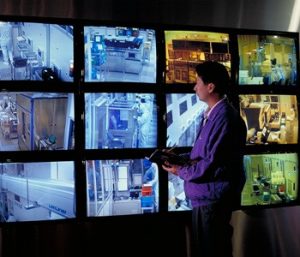Watch Your Back — Here Comes Ubiquitous Surveillance
Don’t look now, but video surveillance is hot. It was inevitable. The willing surrender of privacy and the fear of bad actors make a potent combination.
This week, police in Dubai enlisted a new recruit. By the end of the year, a diminutive self-driving car will begin patrolling city streets.
The robotic rig will feature cutting-edge video gear, networked facial-recognition software and an aerial drone, in case undesirables go off-road.
Boosted by emerging technologies, video surveillance has become a service. And it is about to explode.
According to Markets and Markets, a global research consulting group, the market for Video Surveillance-as-a-Service (VSaaS) will grow from $30.37 billion in 2016 to $75.64 billion in 2022, a compound annual growth rate of 15.6%.
VSaaS providers are poised to clean up, too.
Demand is surging thanks to the perception of rising crime rates, increased terror attacks and acceptance of video surveillance. Meanwhile, the cost of camera sensors, network storage and computing power is plummeting.
Then there is automation. Video surveillance used to be labor intensive. Humans monitored video screens 24/7. They are being largely replaced by software algorithms capable of recognizing faces and detecting movement, even in the dark.

Now, the number of surveillance cameras throughout the country is 170 million, according to The Wall Street Journal. Facial-recognition software is so widely accepted, it is used to log into mobile apps, gain access to office buildings and withdraw cash from bank machines.
The government is collecting all of this information and adding it to a massive database.
It’s being mined with data analytics. Powerful new artificial intelligence software tools are compensating for low light, bad angles and even aging.
And what public cameras don’t capture, state-owned bots crawling pervasive social media do.
In Dubai, initial ambitions are much lower. In 2015, Wired reported the emirate contracted with New Zealand’s Martin Aircraft Company to equip firefighters with jetpacks. This policing robot gambit seems to fit with that narrative. It’s cool tech for a city/state that wants to be cutting-edge.
The machines are being built by OTSAW Digital, a Singapore company. In a press release, its chairman, Ling Ting Ming, explained the goal is more about using robots to augment policing, rather than to track humans.
“Robots exist to improve the quality of human lives,” Ling says.
Happy talk aside, I’m optimistic because new technologies normally lead to important new industries and to new business models, like VSaaS.
Despite the enormous potential market, the rise of VSaaS is something barely on investors’ radar. While video surveillance in North America will not reach Chinese penetration any time soon, casual observation at airports or crowded public places like stadiums shows that the number of cameras is growing.
In the current environment of terror and travel bans, this trend will grow exponentially.
However, navigating is important. Video surveillance hardware is a fragmented marketplace. The market for VSaaS software is even more complicated. Investors need to choose carefully. One camera chip maker in the mix is Ambarella (AMBA), based in Silicon Valley.
Best wishes,
Jon Markman

No comments:
Post a Comment